Independent Reading Middle School Tic Tac Toe Board
Inside: Is your choice reading program feeling stale? Are the independent reading activities falling apartment? We tin can engage students and keep book beloved fresh by weaving in new ideas from time to time!
Independent reading programs tin can be the life of your English Linguistic communication Arts classroom political party. Books truly tin be magical for students and teachers to share together and to read independently. When inspiring stories are ubiquitous in our classrooms, vibrant discussions help to strengthen the overall customs and culture.
Whether you're just dipping your toes into independent reading or looking for means to freshen upward your existing approach, y'all'll discover lots of ideas hither! If you've been around my blog or my Instagram account for long, yous probably already know my strong distaste for reading logs and accelerated reader. Compliance-driven accountability tools create a negative space betwixt students, books, and teachers.
In this post, you won't find unnecessary strategies that frustrate or bore readers. Instead, you'll discover over a dozen fresh ideas for bringing healthy discussion and community to your contained reading program.
Previously, I've written virtually assignments nosotros can use to assess students' progress with reading literature standards when it comes to their independent reading books. But, beyond standards assessment, I find footling to no value in layers of accountability that experience like piece of work just then we tin "make sure" students are reading.
If we establish a positive reading civilization, students will read. Let's check out the activities. Keep in mind, you won't detect predictable, structured bell-ringer blazon approaches here. I similar to keep it fresh considering that'south my style. Also, variety drives away boredom and unleashes creativity.
For the purpose of description, independent reading refers to when students are reading a book of their own choosing. They may be using an audiobook or even sharing the book with parents, but students are reading the book either in class or at domicile because it'southward a book they accept chosen to read. Typically, this work is a meaningful extension of additional required classroom texts.
1: ENTRANCE QUESTIONS
Entrance questions can be a fun way to open upwardly thinking. Nosotros can pose these questions when students walk into class or after independent reading time. The purpose of an entrance question is to get students talking about their books, which contributes to a social reading environment. Indirectly, students will be getting ideas of books they may want to read in the futurity, and those who are answering the questions volition be reflecting on what they are currently reading.
Consider these possible examples:
- Detect the near important word from the last 2 pages you lot read. Why is information technology of import to the story?
- What is the setting of your book? Does the protagonist relish living in this setting? How do you know? How does the setting crusade limitations or provide freedom for the characters?
Entrance questions provide a thin layer of accountability. Students who are non reading their books volition have a difficult time coming up with authentic answers to the prompts.
You can observe more entrance prompts like this here .
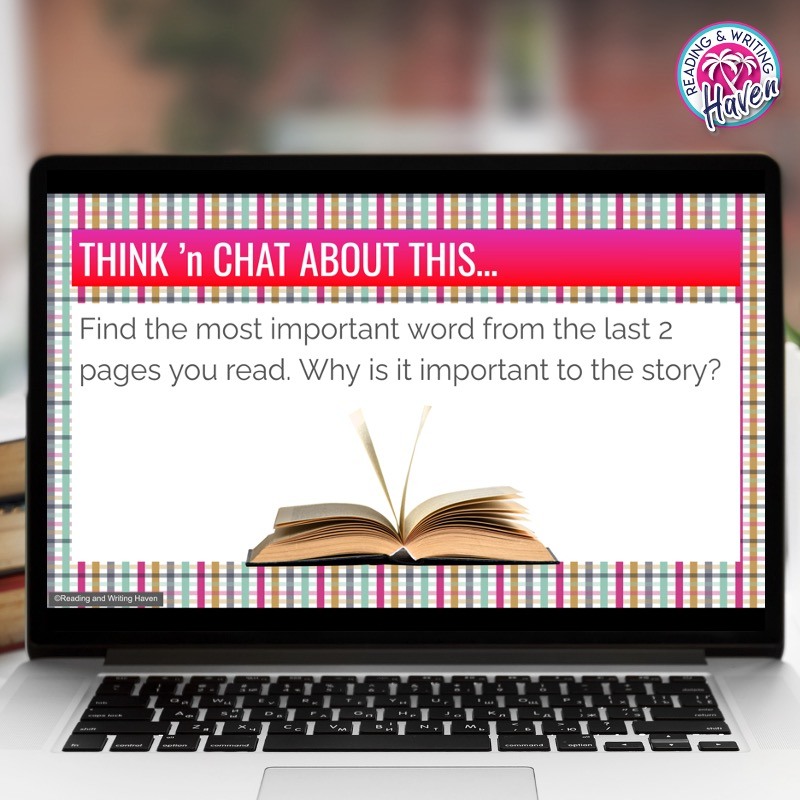
two: SKILL Application
One of the best ways we can bridge the gap between whole class texts and independent reading activities is to ask students to apply the skills we are teaching in a whole-group setting to their selection reading books.
For example, if yous teach students a five judgement summary strategy using a short whole-class text, ask them to apply their summarizing skills to their independent reading book. Analyzing figurative linguistic communication as a class? Why not extend that practice to independent reading? Making inferences about characters? Same thing.
I like to use scaffolding tools like graphic organizers and bookmarks to make a seamless connection between whole-form texts and independent reading books. I recommend modeling with the same tools students will be using on their own.
Reluctant readers will be more likely to invest in their independent reading books if they feel the books are an important part of their learning process.
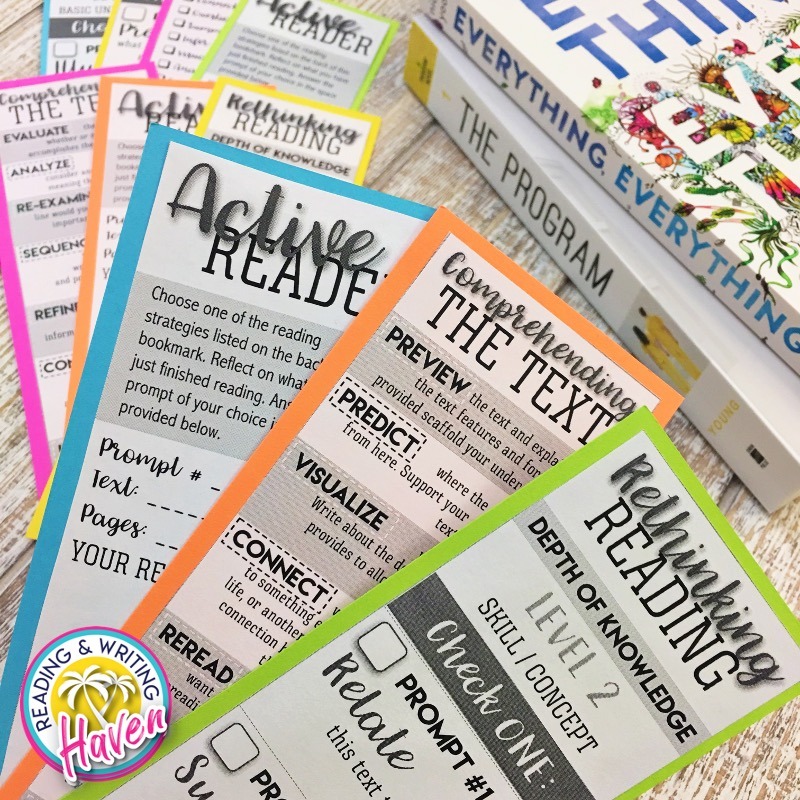
three: READING CONFERENCES
Reading conferences are opportunities to get to know readers. During a true reading conference, the instructor sits with each student to have quick conversations about how students are approaching their independent reading books. We can ask students summary questions, inference questions, analysis questions, and more.
Reading conferences are another opportunity to span the lessons and skills we are working on every bit a whole class with the books students are reading on their own. Many secondary teachers devious abroad from reading conferences considering nosotros have so many students and a short amount of time to see with them.
I've used v-minute reading conferences during independent reading time. This ways I am able to conference with ii students each mean solar day, and it takes me 2 to 3 weeks to brand it through the whole student roster. That'southward okay! Meeting with students one-on-one allows us to differentiate the reading skills and strategies we want them to work on, and it helps to build relationships with them.
Plus, if we tin tell they aren't actually engaging with their book, we can utilize this time to help them find a book they will enjoy more.
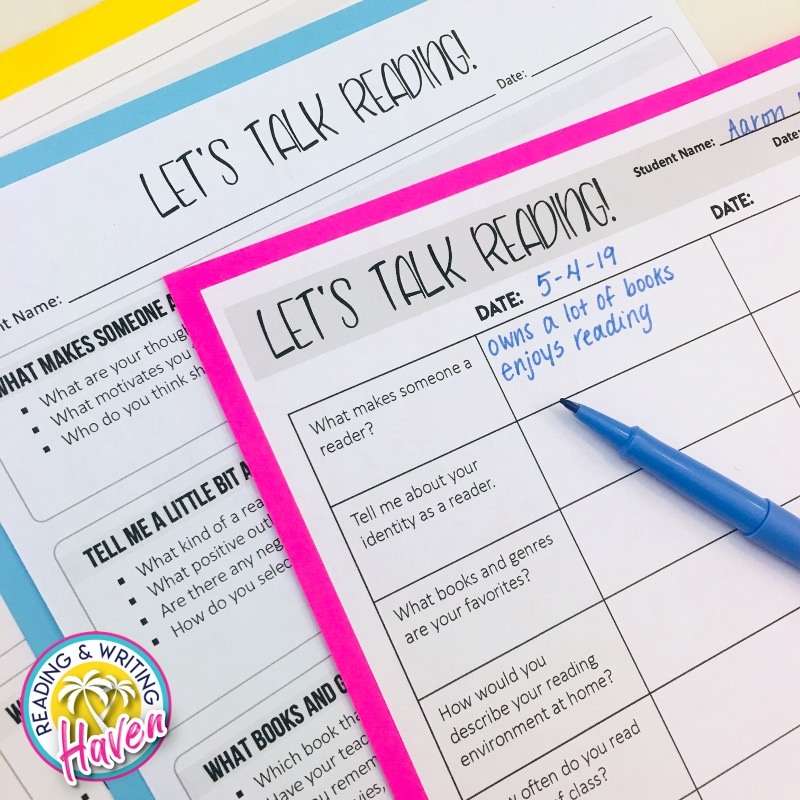
If y'all aren't ready to embrace the i-on-one reading conferences approach, give small-scale group conferences a effort! Run into with 3 to four students at a fourth dimension to discuss a reading strategy (predicting, inferring, visualizing). We can talk about how dialogue impacts stride or how the writer uses figurative language to engage readers.
4: Volume CHECK-INS
In Reading in the Wild, Donalyn Miller recommends a condition of the class, which is where we touch base with each student to enquire about their reading progress. When I say your name, share out what page you're on and something interesting well-nigh your reading! Nosotros tin do this while conferring ane-on-one, when taking omnipresence, as nosotros circulate the room during independent reading, or in small group format when sharing about our reading.
Notwithstanding, Pernille Ripp recommends a second option for reading checks, which is asking students to sign in at the beginning of each form past updating the current page number of their independent reading book. We can streamline this process with a digital or print whole class book check-in sheet that can later be analyzed for trends (pictured below).
At the end of a week or month, we can ask students to total the number of pages they have read and submit that number via a Google Course. This is data we tin can utilize to reverberate on as a form.
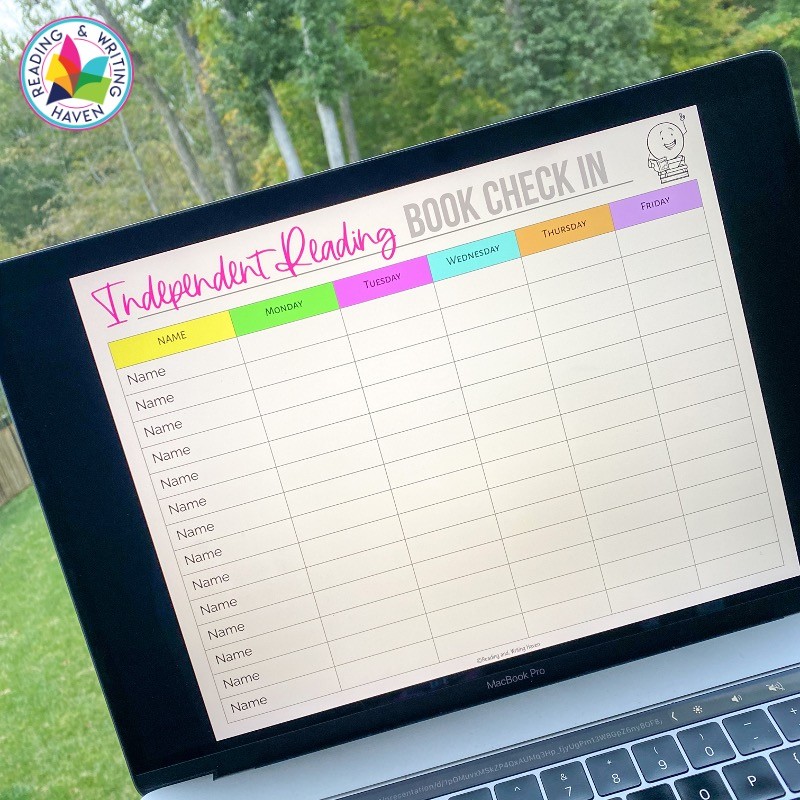
5: Casual Volume TALKS
What are people typically actually excited to do later reading something super good? Tell others, of form! That's why informal book talks are an engaging fashion to open up authentic social reading situations.
After independent reading time, ask for volunteers to share something exciting, moving, or humorous from what they've read, a favorite line or passage, or an impressive example of author'southward mode. I consider these informal book talks, but I don't recommend titling them equally such to students because it increases the formality.
But ask who wants to share, and permit a few voices shine. To make sure everyone has an opportunity to participate, keep rail of who has already shared. When you run out of volunteers and still have students who haven't shared, ask them questions about their volume.
"Jaclyn, I see you are reading ___. What happened in your reading today?"
"Nathan, what's your favorite part of the volume you are currently reading?"
The expectation to share our reading is a gentle reminder to students:Yous need to be reading. It volition be your turn soon. This layer of accountability is one I'grand comfortable with because sharing proficient books is an authentic reading practice.
six: READING SPRINTS
Here's another later on-contained reading activeness, and this one engages the whole class! Reading sprints are when students answer a standards-aligned question about their book straight following reading time. They jot their thoughts on a sticky annotation and and then share it on the board.
As a teacher, in that location are multiple ways we can lead short or long on-the-spot discussions about literature skills using these sticky annotation collections. Students' responses to questions will give us insights as to what skills we need to hone.
Reading sprints keep the spirit of community reading alive in our class and let us to tie independent reading to whole-class reading lessons seamlessly!
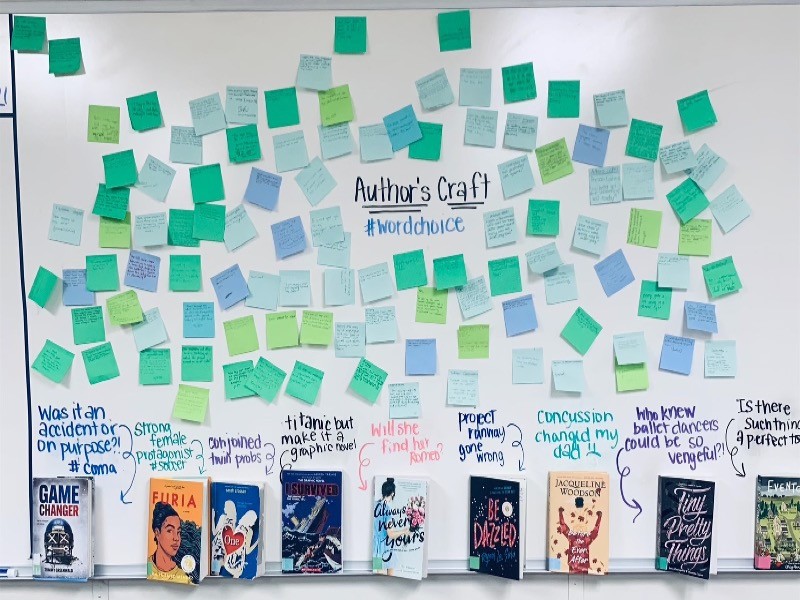
7: READING RATE GOALS
In 180 Days, Kelly Gallagher and Penny Kittle recommend having students prepare their own reading goals based on their reading rates. To practice this, have students read for ten minutes. They should record the page they begin on and the page they cease on. With that number, they will multiply by 6 to discover the number of pages they can read per hour. Then, students should set a goal for the number of pages they desire to read in a calendar week.
Gallagher and Kittle suggest teachers could grade students upon whether or not they encounter their self-determined goal, simply my own preference is to avoid grading with independent reading as much as possible. At that place have been enough of times I oasis't met my own goals for finishing a book or reading as much every bit I should have in a month, and I've needed to give myself some grace.
Of course, text complexity plays a office in students' reading rates, and they need to be taught to set up goals that are advisable for the text they are reading. Students can also set goals for appointment, environment, stamina, and multifariousness of reading.
8: FIRST Folio SNEAK PEAKS
Hooking students on good books is the first step toward a thriving independent reading program. Over the years, I've noticed the almost engaging books frequently have high-involvement showtime pages.
And then…permit's accept advantage of some sneak peaks! Either with physical books or digitally, accept students read the first folio, tape their thoughts, share their thinking with a small group.
This activity is non necessarily an alternative to a reading log, but it is excellent for edifice our "to read" lists and promoting a positive reading civilization.
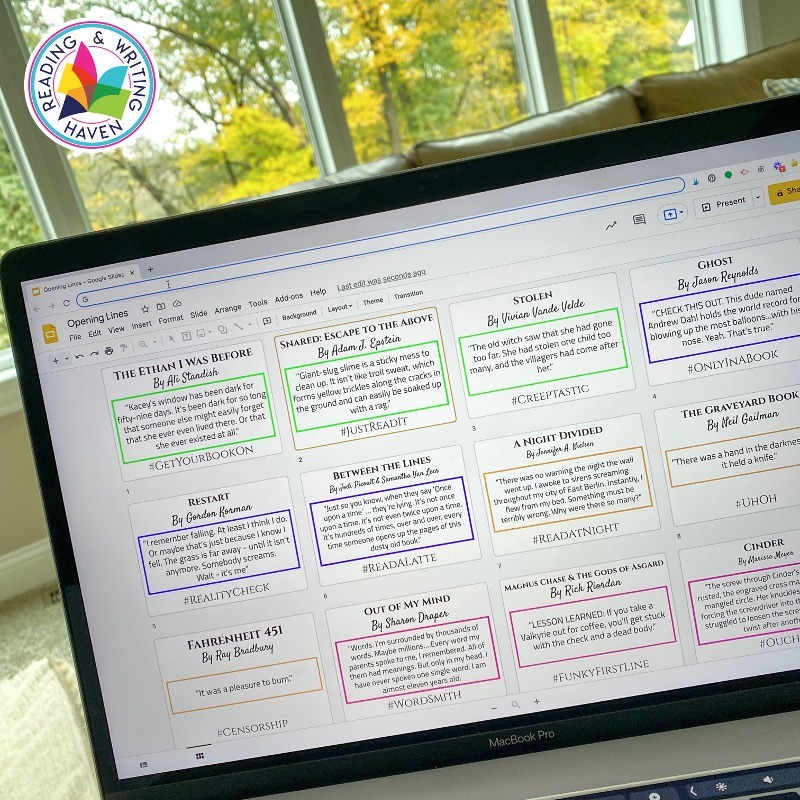
9: VIEWING PARTIES
Viewing parties take recently get popular considering they enable groups of people to watch videos together even when they're apart. When it comes to independent reading, why non host trailer viewing parties? Students can relish the trailers every bit they sit in our classrooms, or they tin can watch remotely.
Viewing parties are yet another way to share amazing book recommendations with others. Students tin recommend book trailers they recall their peers would relish, and teachers can generate book trailer lists based on weekly or monthly themes.
Why not host monthly viewing parties as a fashion to recap First Chapter Friday books (here's a listing from a friend!) you accept previewed or other excerpts you've shared? They're a friendly reminder that those books are however available for the reading!
Become new books on students' radar by finding authors who are reading excerpts from their ain books. Or, invite authors on Twitter similar Jennifer Nielson to host a virtual book reading or Q and A with your form.
x: GENRE EXPOSURE
I first began introducing literary genres slowly throughout the twelvemonth when I read The Book Whisperer years ago. Over time, I saw the value of this approach. While older students generally already have a specific taste for certain genres, exposing them to a diverseness of them throughout the year helped students to expand their palettes.
Some specific ideas…
Introduce new genres with a brief set of notes. (You tin can discover mine here.) Discuss common characteristics of that genre. Read excerpts from those genres…outset pages, first chapters, high-interest passages, and back covers. Y'all can also agree a genre sorting activity to get more books in students' hands.
11: COLLECTIVE READING WALLS
After students finish a book, accept them make full out a book spine and add information technology to your classroom decor! This unproblematic activity gives both teachers and students a visual for community reading volume. The trickiest part of using the book spine strategy is remembering to take students fill up them out! So, I recommend building in a regular infinite for this to happen.
Choose a day of the week, and write it into your lesson plans for that solar day! On a bi-weekly or monthly basis, requite students 5 to ten minutes to complete their volume spines in course and add them to the wall if you desire.
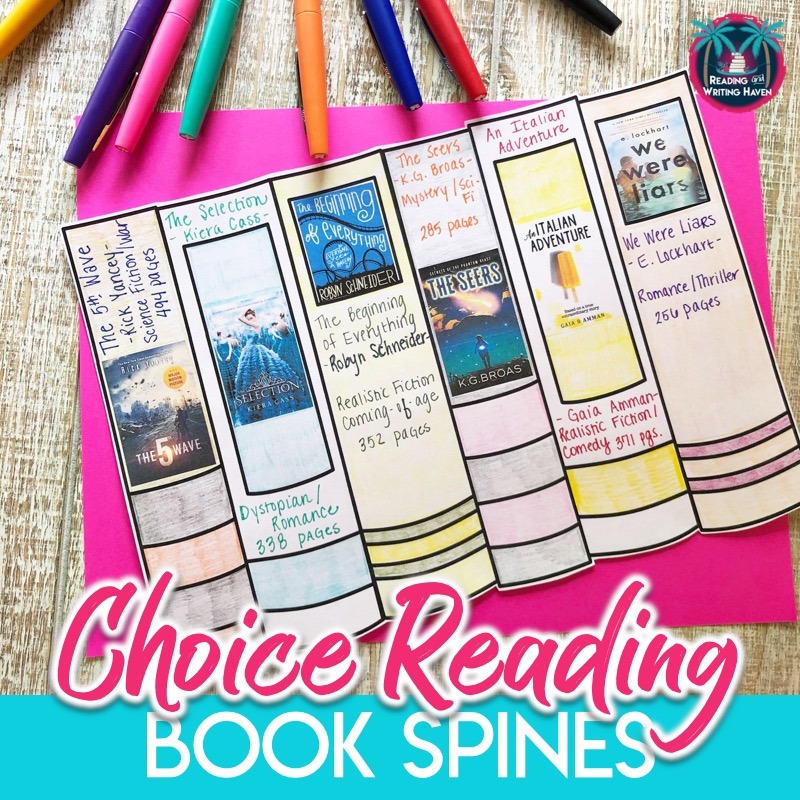
12: READING LADDERS
Reading ladders are my absolute favorite alternative to the reading log! They still allow space for students to tape what they've read. But they feel less intrusive. Plus, reading ladders are convenient for discussing book nutrition, reading volume, and reading identity.
With a reading ladder, you lot commencement with a bookshelf. Then, choose how yous want to label each shelf. I often choose to characterization shelves with words like "just correct," "entertaining," "challenging," "easy," and "frustrating." This labeling system helps readers to place the complication of books they are reading. We always discuss how it'due south okay to read a motion picture book that is easy. And, information technology's okay to read a classic that is challenging! The key is to know what you are reading and why.
Here are my my print and digital reading ladders.
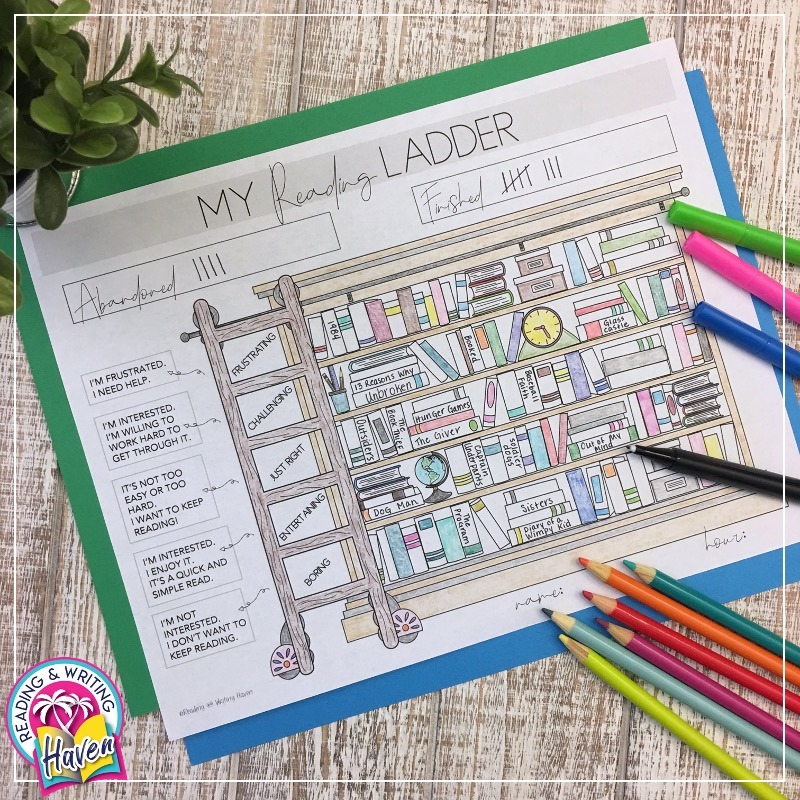
13: READING DISPLAYS
Another way we can make reading a visible part of our classrooms is through bookish displays. It's hard for students to forget about reading when they are surrounded past high-involvement novels! Reading displays are a non-invasive way to rail collective reading.
Display novels you want to draw attention to at the front of your classroom or face-out on your library shelves. Consider having students contribute to a form message board. Here are some bookish message board ideas I've created using social media concepts.
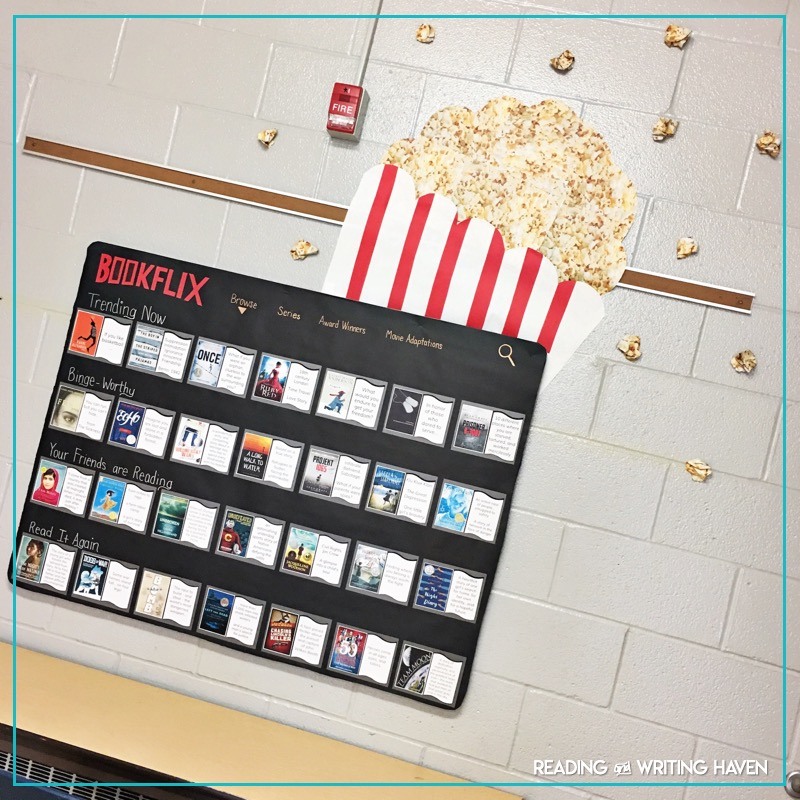
14: READING CHALLENGES
Appoint readers with challenges to get them reading more oftentimes! Endeavor challenges with unexpected twists. Read nether a homemade fort, in a hammock, or on vacation. Aggrandize your genre diet by dipping your toes into something new. Recommend books to a friend or read something recommended by a coach!
Format reading challenges into a tic-tac-toe option board or BINGO board and have them submit their titles whenever they cease a sure number of novels.
You tin can too work with students to create individual or whole-course challenges to read a certain number of pages each week or month. Students can fill up out a simple Google Form at the finish of the time period to indicate how many pages they read.
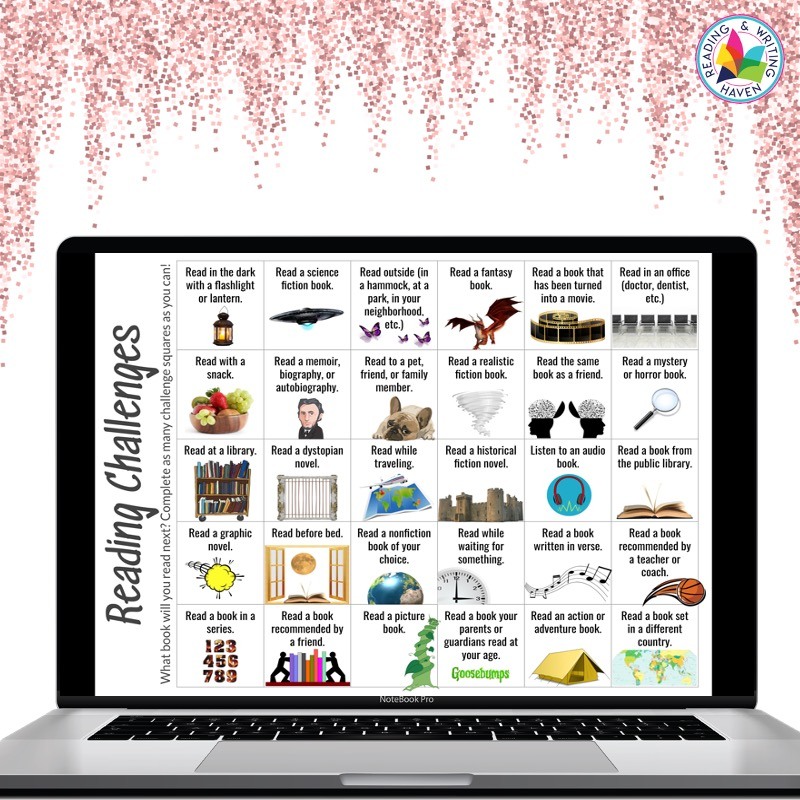
15: READING JOURNALS
After reading, we can ask students to write about what they've read. Connecting reading and writing is a healthy habit that encourages reflection and inventiveness. When students see literature from an author's point of view or when they approach their own writing to utilize the literature techniques they've analyzed, students are empowered!
Reading journals (whether recorded digitally or in a reader's notebook) are one fashion to build in standards-aligned accountability. We can hit both reading and writing standards! Here are two sets of writing journals you lot tin can use to get started with journaling about reading: Set i and Set 2.
Want to prioritize the questions but cut the writing? Readers naturally discuss what they are reading with others! Promote a book club blazon civilization (fifty-fifty when students are all reading different books!) by keeping high-interest word prompts or more basic comprehension-style questions handy.
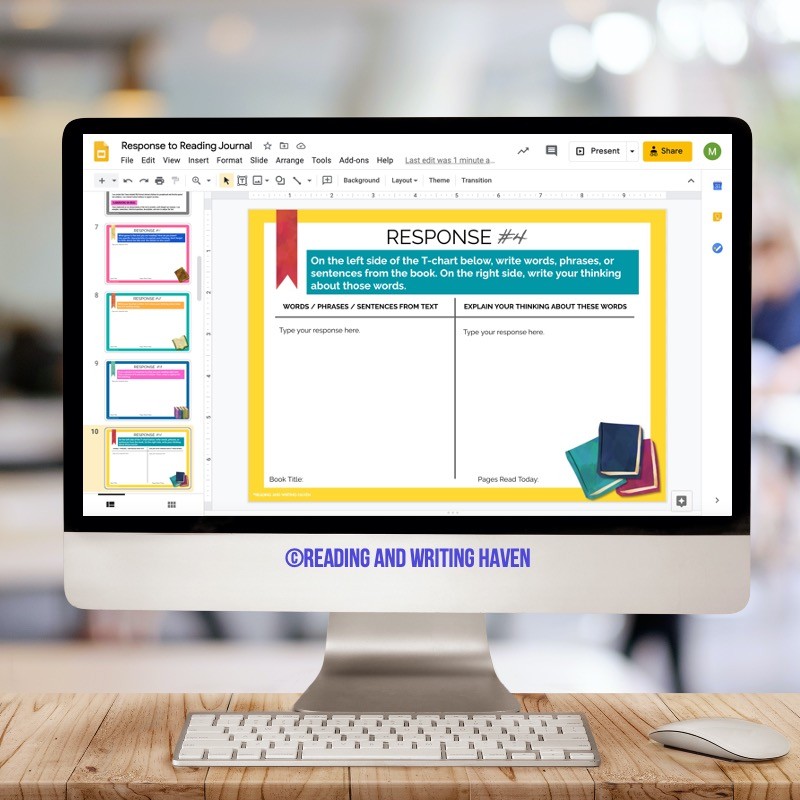
The Key: Every proficient idea is only practiced in moderation.
As with reading logs, any and all of these tools could be used in a mode that negatively impacts our readers…including using them besides often or treating them every bit "I gotchas." It's ongoing work and reflection to identify whether what we are request of students is drawing them closer to reading and farther on their reading journeys or whether it is doing the opposite.
If we really desire to know whether our students are reading, all we need information technology do is watch them. Are they devouring books? Sharing their favorite parts? Carrying books with them? Flipping pages with optics tracking during independent reading fourth dimension? These are accurate indications of reading. Best of all, they don't add anything to our plates, and they won't plough our readers away from books.
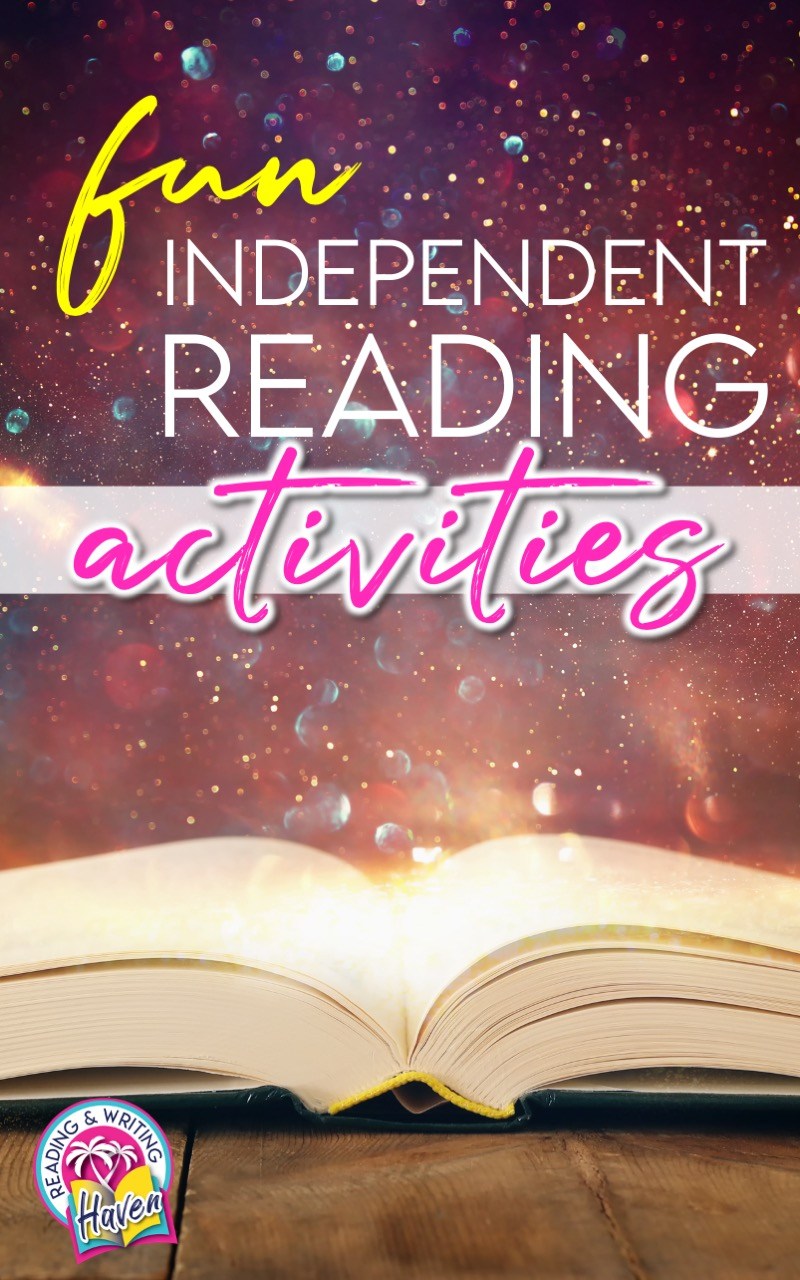
Source: https://www.readingandwritinghaven.com/fun-ways-to-freshen-up-your-independent-reading-program
0 Response to "Independent Reading Middle School Tic Tac Toe Board"
Post a Comment